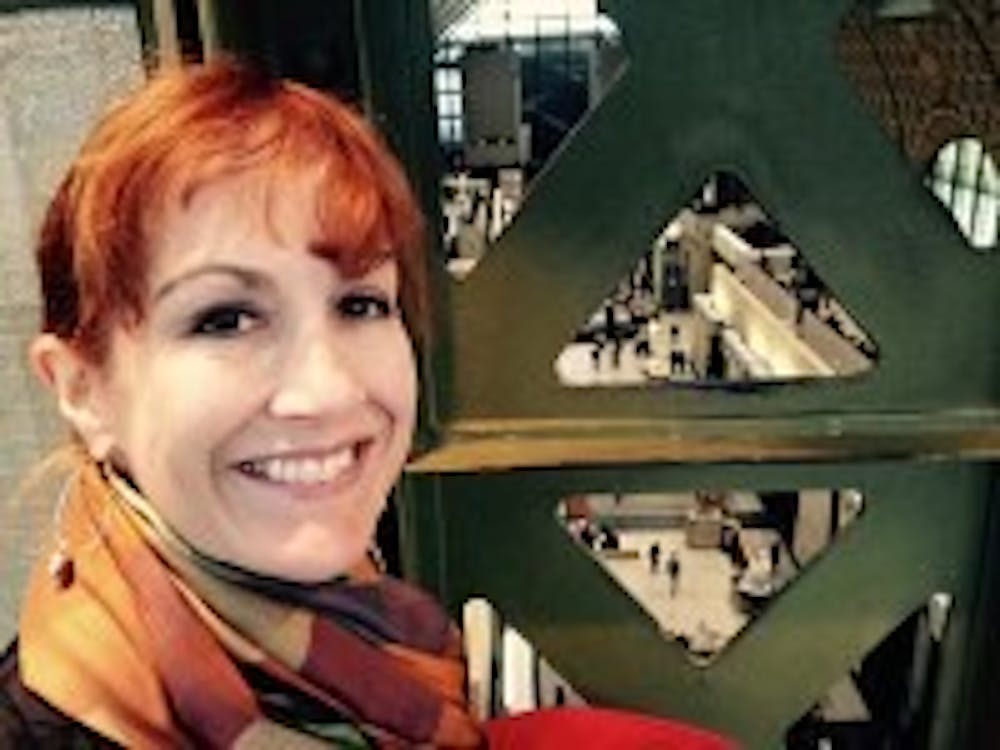CORRECTION: An earlier version of this article incorrectly stated that the project between Duke and the state sends out grief counselors. They send out bridge counselours. The story has been updated with the correct information. The Daily Tar Heel apologizes for this error.
Heidi Swygard is a professor of medicine at UNC and part of the North Carolina Department of Health and Human Services in the Public Health division. Swygard is a medical epidemiologist and a consultant on a grant with researchers from Duke University developing technology which would improve intervention for young men with HIV. Staff writer Elizabeth Moore asked Swygard some questions ahead of World AIDS Day on Saturday.
Daily Tar Heel: Within the HIV field of research, what kind of work have you done in the past, and what made you interested in it?
Heidi Swygard: I am embedded in the State Health Department, in the HIV/STD branch. Much of my work, in terms of patient care, is in clinic. I am, from the state level, interested in how we develop care, how we can keep patients in care, at one point I was on a Special Project of National Significance. They call these SPNS grants, which are released by HRSA, the Health Research Service Administration. We develop at the state level, and in conjunction with Duke, a program of state bridge counselors, and these are people who bridge newly-diagnosed patients into HIV care and they also help with patients who have been lost to care get back into care.
Of people who are diagnosed with HIV, probably only about, nationally, 40 to 50 percent are biologically suppressed. Biological suppression is what we want. We know that biological suppression translates to years added to a patient’s life in terms of both quality and quantity of years added. Additionally, we know that if patients are biologically suppressed they do not transmit the virus to others. Ideally, we’d like everybody who is diagnosed to all be linked into care, to all be on medicines and to all be biologically suppressed, but the reality is that there’s a drop-off. It’s true for any chronic condition, but for HIV it has ramifications in terms of public health.
From a state level, what we did with this project, between UNC, Duke and the state, was develop a statewide system of counselors, about seven distributed across the state, whose job it was to make sure that patients who were newly diagnosed with HIV actually got to and attended their first appointments and had plans to go to a second appointment, and these bridge counselors also went out and found patients who they had lost to care, who hadn’t been seen in at least 12 months. A lot of that burden for patients who are lost to care absolutely falls to clinics taking care of them, that they reach out and try to find the patient. The clinics are sort of limited. Many times, they can’t go out in the field. They’re sort of limited to phone calls and sending letters and that’s kind of about it. These state bridge counselors are actually really good at finding people and helping them get back into care.
DTH: What were some of the needs that you saw in the community that led you to work on this project?
Heidi Swygard: One of the needs is we really didn’t have a standardized process or program to get patients back into care and also … In North Carolina, when you’re diagnosed with HIV, you are going to be visited by a disease investigations specialist who has a couple of tasks. One of those tasks is to link you to care, but there really wasn’t that follow through to make sure that this patient actually attended that first appointment and had plans to go back. So what we had was people being diagnosed but who weren’t linking to care, and now with the program in place our linkage at six months is 98 percent, at one month is in the 50 to 75 percent range. So these bridge counselors have done a really great job at getting our newly diagnosed patients linked into care.
Some of the other needs we found, though, in terms of patients who had been lost at care, there are a lot of issues as to why a patient may not be retained in care but a really big one is transportation, and then competing priorities. A lot of our patients have jobs that really won’t let them take time off to go to an appointment or they may have to prioritize childcare over their own health. So, patients who are not engaged in care, it’s usually for a logistical reason that for bridge counselors, it’s kind of their job to try to help the patient get past that. And that’s included driving patients to appointments.




